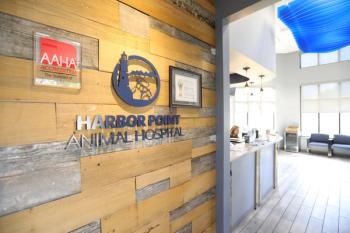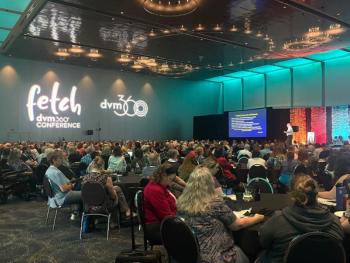
Agents for HCM therapy in cats (Proceedings)
Feline hypertrophic cardiomyopathy is a challenging disease for veterinarians given its heterogeneous nature and the large segment of HCM cats that are asymptomatic. A genetic basis has been suspected for a long time and recently disease-associated mutations in myosin-binding protein C have been documented in Maine coons and ragdolls.
Feline hypertrophic cardiomyopathy is a challenging disease for veterinarians given its heterogeneous nature and the large segment of HCM cats that are asymptomatic. A genetic basis has been suspected for a long time and recently disease-associated mutations in myosin-binding protein C have been documented in Maine coons and ragdolls1,2. However, phenotypic differences in the disease across the wider spectrum of cats are remarkable. Treatment of asymptomatic cats is still largely empirical and controversial. Treatment of symptomatic cats has evolved over the last few years as data from multicenter clinical trials has become available. Understanding the relation between the disease pathophysiology and the clinical pharmacodynamics of drugs used in the management of this disease is crucial to make appropriate therapeutic decisions.
Objectives Of The Presentation
1. To briefly discuss the pathophysiology of this disease.
2. To discuss the rationale for potential therapeutic targets.
3. To review the clinical pharmacodynamics of cardiovascular drugs and the results of recent clinical trials on the chronic management of symptomatic HCM.
Key Pathophysiologic Points
1. Distinguishing the different forms of feline myocardial disease is not straightforward, which complicates its management.
2. Additionally, end-stage disease acquires certain characteristics that do not fit well into any category3.
3. Hypertrophic cardiomyopathy is defined as a primary myocardial disease characterized by concentric hypertrophy of the nondilated left ventricle (LV) and diastolic dysfunction4,5.
4. Diastolic dysfunction may lead to left atrial dilation, congestive heart failure (CHF), arterial thromboembolism (ATE), and death.
5. Diastolic dysfunction results from a delay in the early relaxation of the heart muscle and increased ventricular stiffness6.
6. Increased stiffness is related to replacement fibrosis and interstitial fibrosis, which are common pathologic findings in HCM7.
7. Decreased cardiac output and hypoxemia lead to activation of the renin-angiotensin-aldosterone system (RAAS), resulting in vasoconstriction, aldosterone-induced sodium and water retention, and sympathetic activation. This has long-term local and systemic deleterious effects.
8. Angiotensin II and aldosterone increase collagen synthesis in cultured cardiac fibroblasts, which may be prevented by receptor antagonists8,9.
9. Aldosterone increases the expression of markers of hypertrophy in rat myocytes10.
Relevant Therapeutic Points
1. Evidence for drug effect on the progression of HCM in asymptomatic cats is lacking11. Beta-adrenergic blockers, angiotensin converting enzyme inhibitors (ACEI), calcium channel blockers, and spironolactone are often administered to cats with HCM that are not in heart failure. The rationale can be found in the well established thought that treatment before CHF symptoms may slow the progression of the disease. A recent study has shown that treatment of asymptomatic cats with ACEI may not be warranted12.
2. For practical purposes, staging the disease in individual cats might be more important than the exact classification, since drug treatment of asymptomatic cats has yet to prove of benefit3.
3. Based on the pathophysiology of HCM, potential therapeutic targets for symptomatic cats with HCM include:
a) Decrease the fluid accumulation and congestion.
• Diuretics
b) Reduce systolic anterior motion of the mitral valve and heart rate
• Beta-adrenergic blockers
• Calcium-channel blockers
c) Vasodilation to improve organ perfusion.
• ACEI
• 2% Nitroglycerin (acute cases)
d) Reduction in myocardial fibrosis, through inhibition of profibrotic neurohormones.
• Aldosterone antagonists
• ACEI
e) Reduction in the concentric hypertrophy, through inhibition of prohypertrophic neurohormones.
• Aldosterone antagonists
• ACEI
f) Antithrombotic therapy.
• Low-molecular weight heparin
g) Oxygen. (Acute cases)
Drugs, Dosages and Indications
1. In a recent study, ramipril (an ACEI) failed to show any effect on LV hypertrophy or diastolic function12. The study concluded that early use of this drug to decrease LV mass in asymptomatic cats may not be warranted.
2. Placebo-controlled studies with spironolactone alone (4 months) failed to show beneficial effects in cats with HCM that were not in heart failure13.
3. Treatment of acute heart failure is more dependent on the stage of presentation than on the type of disease3.
4. Therapy of acute heart failure may include oxygen, diuretics, and venodilators.
a) Furosemide is the most common diuretic used in cats with acute pulmonary edema. Dose up to 2-4 mg/kg IV, IM every 1-2 hours initially, monitoring renal function, blood pressure and electrolytes. Dose should be decrease considerably when acute signs are under control.
b) 2% nitroglycerin cream (1/8" – 1/4" q4-6h for the first 24 hr) is a common venodilator for acute onset of CHF. However, nitroglycerin tolerance develops quickly in humans and likely in cats as well.
c) Cat should rest in an oxygen enriched environment and might need to be sedated.
d) Severely dyspneic cats may need to be sedated and pleural effusion might be needed.
5. Maintenance therapy of moderate CHF in HCM cats typically involves furosemide and ACEIs. Adjuvant therapy may include calcium-channel blockers or beta-blockers, after the CHF symptoms are controlled.
a) Furosemide is typically given at 1.5-3 mg/kg (6.25-12.5 mg/cat) q8-24h PO to address pulmonary edema. After cessation of heart failure symptoms, furosemide dose should be titrated to the lowest effective dose. High-dose therapy results in moderate pre-renal azotemia, which often can be tolerated.
b) Enalapril, benazepril or ramipril can be used as ACEI. Although there are pharmacokinetic differences among them, there is evidence that they can be used indistinctly. Interindividual PK variability of ACEI is important, so doses should be titrated to individual patients. In a study, benazepril did not worsen the severity of outflow obstruction in cats with hypertrophic obstructive cardiomiopathy14. However, recent studies suggest that ACEI therapy may add little benefit to cats already treated with furosemide15. However, this was small and presented only in abstract form.
• Enalapril is started at 0.25-2.5 mg/kg q24h PO.
• Benazepril is started at 0.25-0.5 mg/kg q24h PO.
• Ramipril is started at 0.5 mg/kg q24h PO.
c) Antiarrhythmic drugs like atenolol or diltiazem are commonly used as adjunctive agents, although there is evidence to suggest that diltiazem in not helpful in prolonging survival and that atenolol could be detrimental. Their utility in cats with HCM is therefore controversial, none of them produce remarkable benefits and many cardiologists have abandoned their use.
• Atenolol can be started at 6.25-12.5 mg/cat q12h PO. (Roughly 3 mg/kg).
• Diltiazem can be started at 1.75-2.4 mg/kg q8h PO. Tablets may be difficult to break for cats.
d) Spironolactone might be beneficial but recent studies have failed to demonstrate any benefit13.
Table 1. Common drugs and doses used in the acute and chronic management of CHF in cats with HCM.
References
Meurs KM, Sanchez X, David RM, et al. A cardiac myosin binding protein C mutation in the Maine Coon cat with familial hypertrophic cardiomyopathy. Hum Mol Genet 2005;14:3587–3593.
Meurs KM, Norgard MM, Ederer MM, et al. A substitution mutation in the myosin binding protein C gene in ragdoll hypertrophic cardiomyopathy. Genomics, 2007;90:261-264.
Fuentes VL. Management of feline myocardial disease. In: Bonagura JD, Twedt DC, eds. Kirk's Current Veterinary Therapy XIV. St. Louis: Saunders Elsevier, 2009;809-818.
Liu SK, Maron BJ, Tilley LP. Feline hypertrophic cardiomyopathy: gross anatomic and quantitative histologic features. Am J Pathol 1981;102:388-395.
Mandinov L, Eberli FR, Seiler C, Hess OM. Diastolic heart failure. Cardiovasc Res 2000;45:813–825.
Golden AL, Bright JM. Use of relaxation half-time as an index of ventricular relaxation in clinically normal cats and cats with hypertrophic cardiomyopathy. Am J Vet Res 1990;51:1352–1356.
Liu SK, Roberts WC, Maron BJ. Comparison of morphologic findings in spontaneously occurring hypertrophic cardiomyopathy in humans, cats and dogs. Am J Cardiol 1993;72:944–951.
Brilla CG, Zhou G, Matsubara L, Weber KT. Collagen metabolism in cultured adult rat cardiac fibroblasts: Response to angiotensin II and aldosterone. J Mol Cell Cardiol 1994;26:809–820.
Brilla CG, Matsubara LS, Weber KT. Antifibrotic effects of spironolactone in preventing myocardial fibrosis in systemic arterial hypertension. Am J Cardiol 1993;71:12A–16A.
Tsybouleva N, Zhang L, Chen S, et al. Aldosterone, through novel signaling proteins, is a fundamental molecular bridge between the genetic defect and the cardiac phenotype of hypertrophic cardiomyopathy. Circulation 2004;109:1284–1291.
Maron BJ, McKenna WJ, Danielson GK, et al. American College of Cardiology/European Society of Cardiology clinical expert consensus document on hypertrophic cardiomyopathy. J Am Coll Cardiol 2003;42:1687-1713.
MacDonald KA, Kittleson MD, Larson RF, et al. The Effect of Ramipril on Left Ventricular Mass, Myocardial Fibrosis, Diastolic Function, and Plasma Neurohormones in Maine Coon Cats with Familial Hypertrophic Cardiomyopathy without Heart Failure. J Vet Intern Med 2006;20:1093–1105.
MacDonald KA, Kittleson MD, Kass PHal. Effect of Spironolactone on Diastolic Function and Left Ventricular Mass in Maine Coon Cats with Familial Hypertrophic Cardiomyopathy. J Vet Intern Med 2008;22:335–341.
Oyama MA, Gidlewski J, Sisson DD. Effect of ACE-inhibition on dynamic left-ventricular obstruction in cats with hypertrophic obstructive cardiomyopathy. In: Proceedings, ACVIM Forum 2003;400.
Fox PR. Prospective, Double-blinded, multicenter evaluation of chronic therapies for feline diastolic heart failure: Interim analysis. In: Proceedings, ACVIM Forum 2003;398.
Newsletter
From exam room tips to practice management insights, get trusted veterinary news delivered straight to your inbox—subscribe to dvm360.





